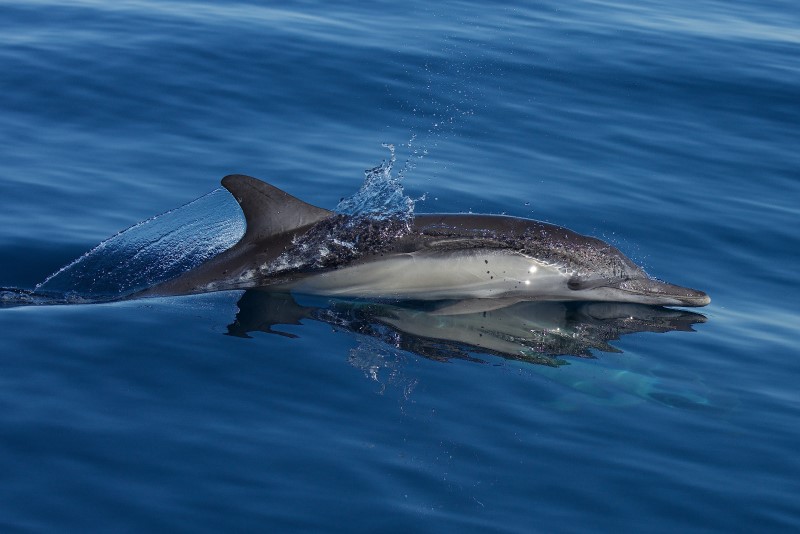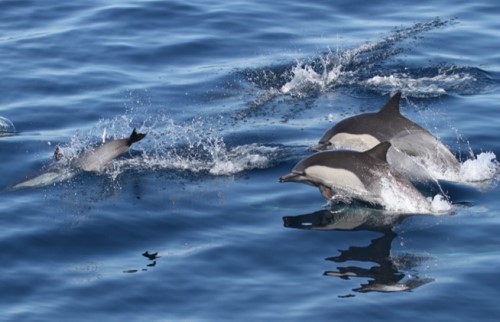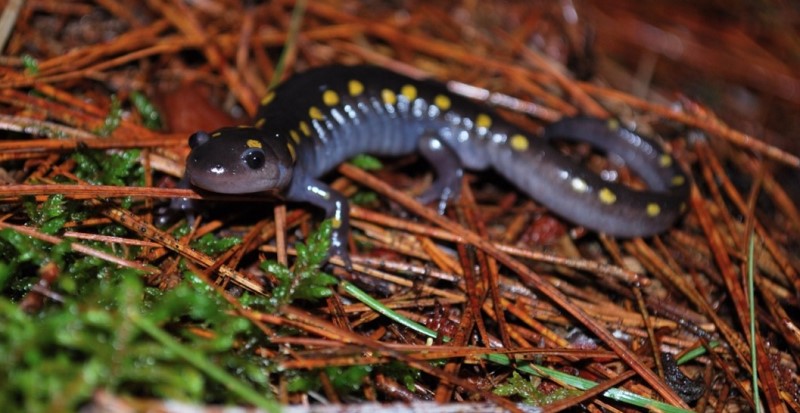New research published in Royal Society Open Science used a combination of remote-sensing technologies to study the effect of naval sonar signals on dolphin behaviour in Southern California. Lead author Dr. Brandon Southall introduces the team's work.

Tell us about your study
On behalf of the research team, I am excited to introduce our latest study, which looks at the impact of military navy sonar on groups of dolphins. Social dolphins, which can occur in groups of hundreds or even thousands, are very common off California and many other coastal regions. They are regularly exposed to powerful military sonar systems known to disturb, harm, and even kill other species. Until now, there were no direct data on whether and how these sonars might impact these most abundant dolphins, despite regulatory assessments predicting that millions of animals might be impacted annually. Using carefully designed experiments, we have measured the behavioral response of dolphins for the first time, and have found that dolphins show strong avoidance, changes in direction, and group configuration after hearing military sonar signals.
How did the idea for the paper come about?
Many of our earlier studies of deep-diving, solitary beaked whales and large, endangered baleen whales involved deploying tags on individual animals, but asking these questions for highly gregarious species requires a totally different approach. For this study, we combined multiple different remote-sensing technologies, including drones, behavioral observations, and underwater recorders, which allowed us to capture group-level responses to these very loud, and potentially impactful sounds. We had run some pilot trials with these challenging species in the earlier studies to see if it was even possible. Some of our colleagues told us we were a little crazy to try this and that it would not work with these species. But thanks to some creative thinking, hard work, and really talented people we accomplished this study, which is really the first of its kind in the world.

Long-beaked common dolphins off Southern California, photographed by drone at 200ft.
How has interdisciplinary collaborations supported your science?
Our international team is made up of folks from multiple different research groups, including SR3, SEA, Cascadia Research Collective, UC Santa Cruz, and Kelp Marine Research. We come together every fall and integrate all our different expertise to track the behavior of different dolphin species including bottlenose dolphins, Risso’s dolphins, and common dolphins. Everyone has an important role, and it takes a lot of coordination and teamwork to pull off this kind of work. Luckily, we all really like working with each other!
What’s your experience of mentorship and what role do you think it plays in science?
Our research team is really balanced between graduate students, post-docs, and senior researchers, and we use this field work to provide opportunities for others to get their feet wet in the field. A few authors on this study started as undergraduates with this research group, and then worked their way up to become leading researchers on the project, demonstrating the success of the mentoring process within our group. Providing opportunity for students is really important for our group, and there have been several master’s and PhD projects that have resulted from this collective effort.

Short-beaked common dolphins near Catalina Island, Southern California.
What are the implications of your work for science and decision-making?
The impacts of this study are really two-fold – on one hand, we have collected a tremendous amount of information on the general behavior and physiology of these dolphin species. We still don’t know a lot about these species, as they typically occur offshore and are difficult to track. Our study fills in critical data-gaps that give us a better understanding of their life-history. Secondly, our experiments have shown that common dolphins are sensitive to navy sonar, and sound levels that are a lot lower than what the Navy had originally predicated. We can now provide this new knowledge to the military, which will use it in their environmental compliance assessments and mitigate its activities efforts on these critical marine species.
Read the full paper here: Behavioural responses of common dolphins to naval sonar
Royal Society Open Science is an open access journal that welcomes the submission of all high-quality science. More information about the submission process can be found on our webpage.
Image credits: Top: Long-beaked common dolphin off Southern California, USA. Photograph by John Durban, taken during research authorized by permit #19091 from the U.S. National Marine Fisheries Service (NMFS). Second: Long-beaked common dolphins off Southern California, USA. Photograph by John Durban / Holly Fearnbach using a drone at 200ft, authorized by NMFS research permit #19091. Third: Short-beaked common dolphins near Catalina Island, Southern California, USA. Photograph by James Fahlbusch authorized by NMFS research permit #19116.

.jpg)


